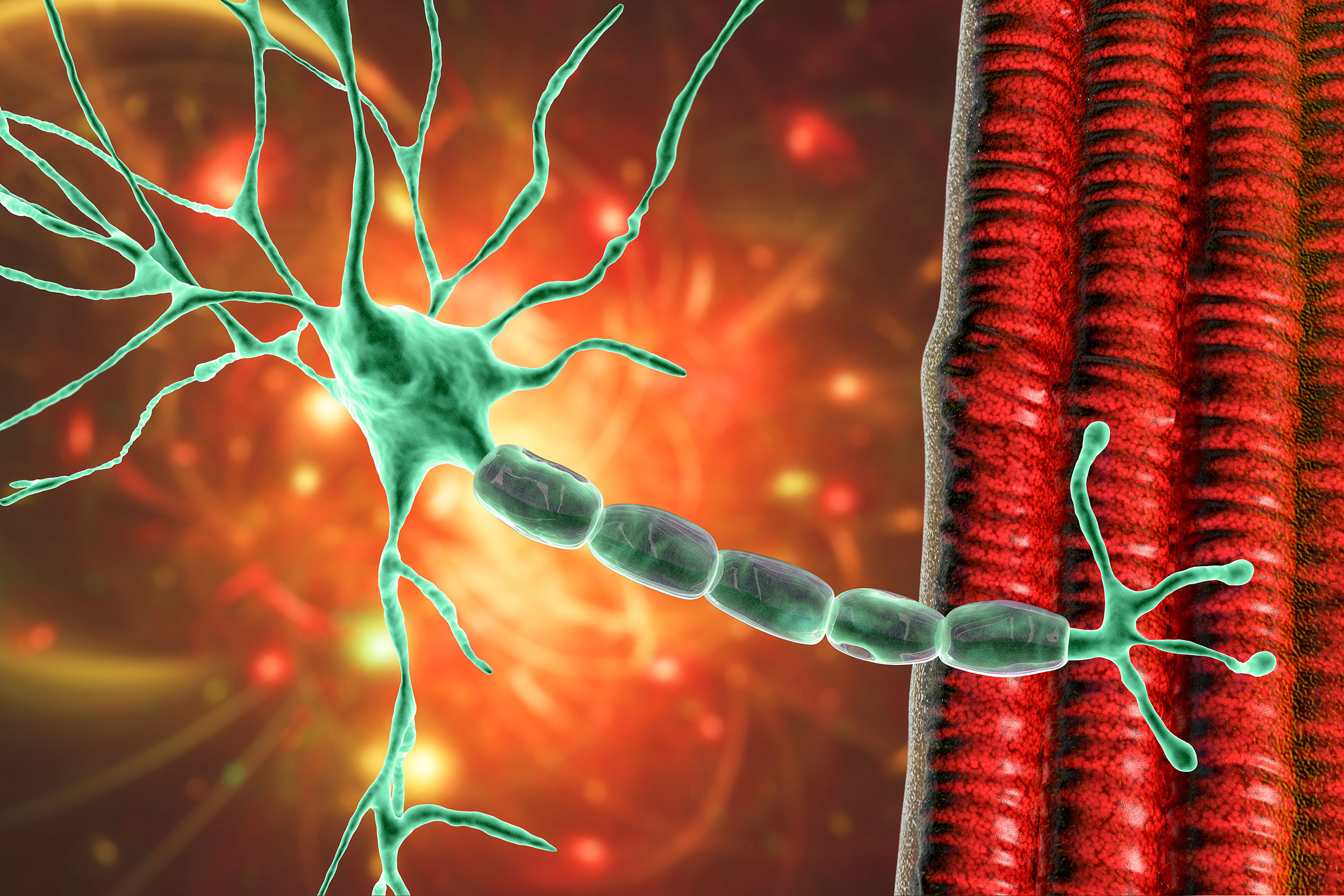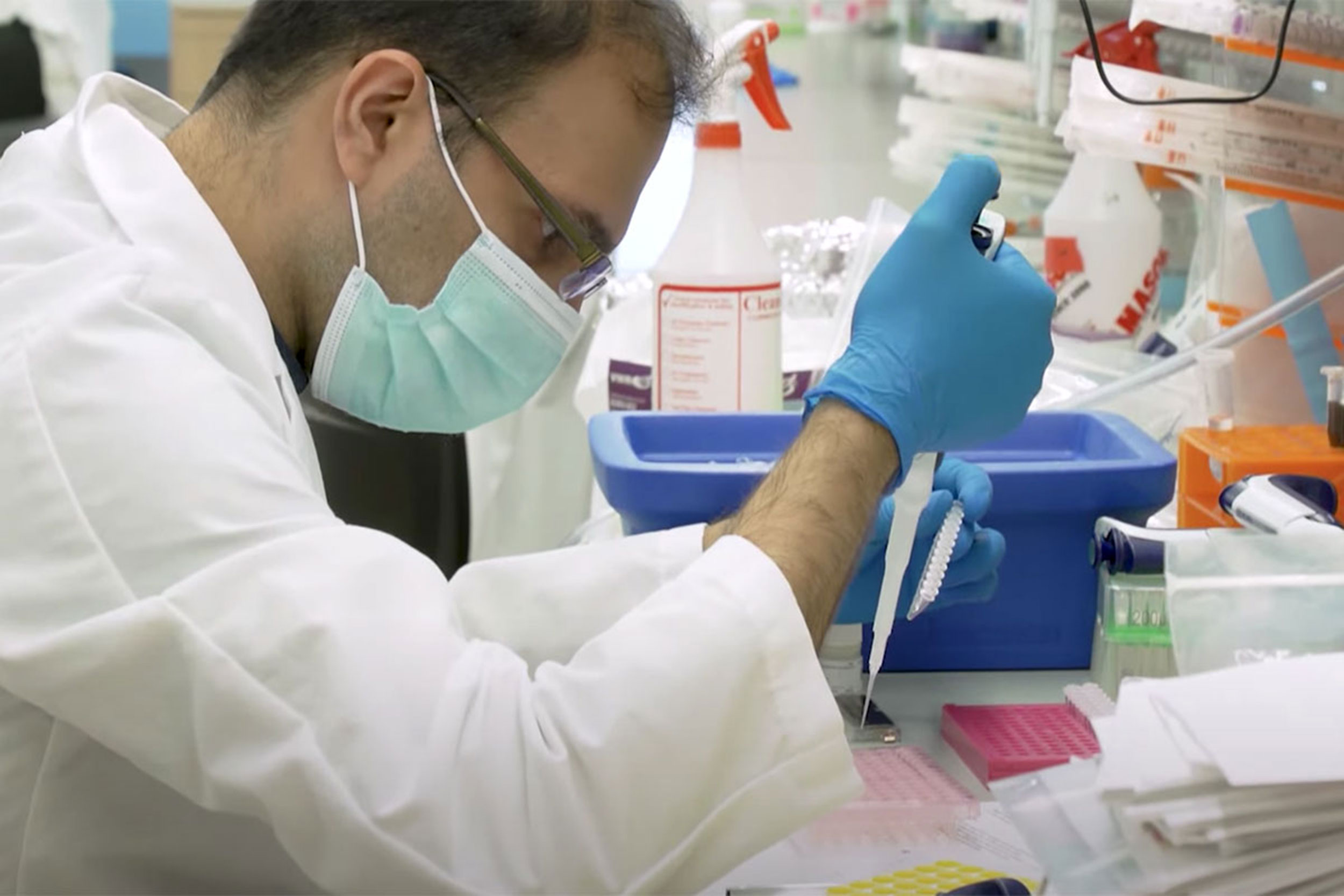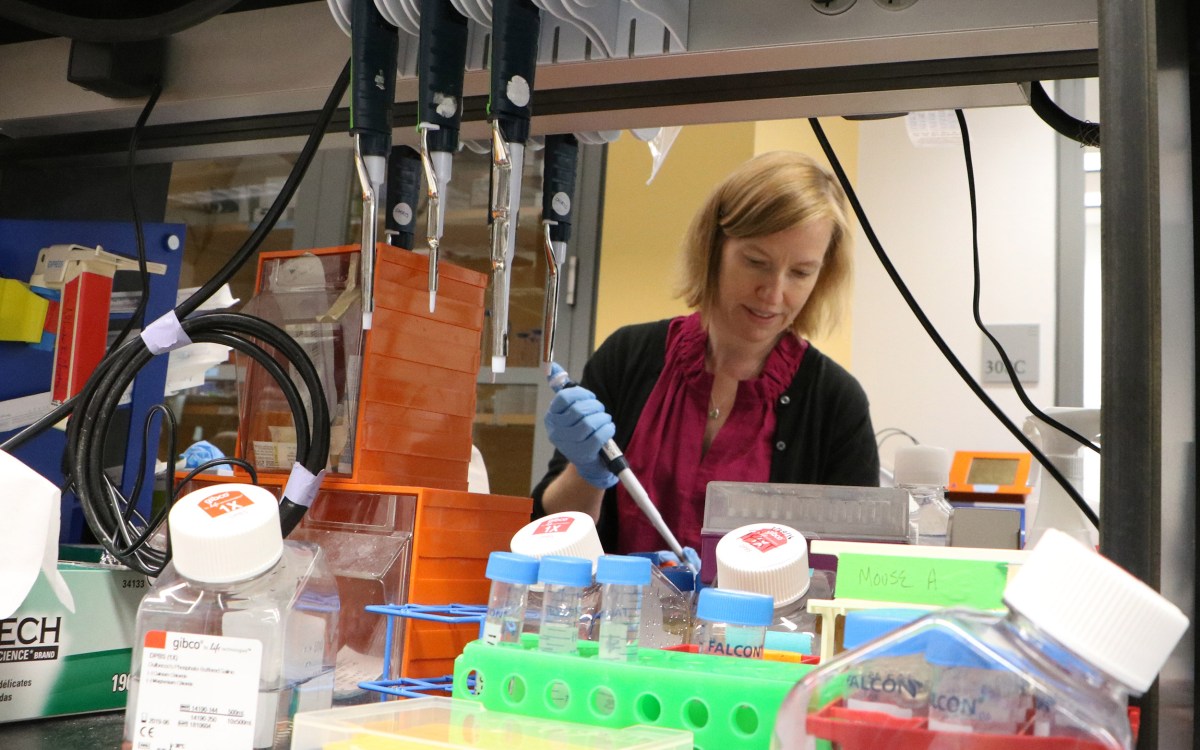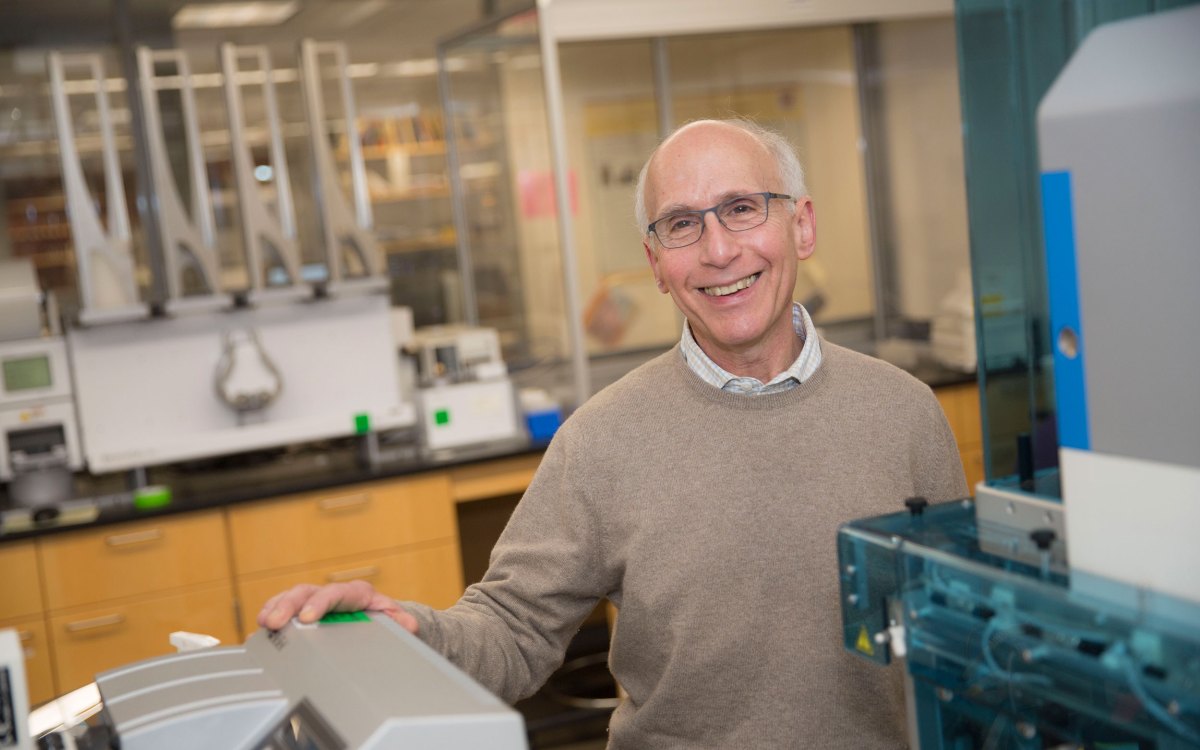
A new gene delivery system has been engineered that has the potential to make gene therapy for muscle diseases both safer and more effective for patients.
iStock
New gene-transport system gets more drugs to sick muscles
Reduces the risk of liver damage and other serious side effects
When Sharif Tabebordbar was a teenager, his father began having trouble walking. Soon, he became wheelchair-bound and was diagnosed with a rare genetic muscle disease.
“I watched my dad get worse and worse each day,” said Tabebordbar. “It was a huge challenge to do things together as a family.”
For Tabebordbar, who’s now a research scientist at the Broad Institute of MIT and Harvard and an associate of the Department of Organismic and Evolutionary Biology, the experience led him to focus on gene therapy, and for the past decade has been his motivation for working in the field. “Genetic disease is a burden on not only patients but families,” he said. “I thought: This is very unfair to patients and there’s got to be a way to fix this.”
Along with colleagues from the Broad and Harvard, Tabebordbar has gotten a step closer to that goal with a new gene-delivery system that has the potential to make gene therapy for muscle diseases both safer and more effective for patients.
The system is called MyoAAV and is described in the journal Cell.
It is a new family of adeno-associated viruses that act as a better transport vehicle for gene therapies and can be used to carry a genetic editing system sometimes called CRISPR 2.0. In gene therapies for muscle diseases, scientists often use harmless viruses known as adeno-associated viruses, to deliver a functioning copy of a disease-causing gene to cells that have shown promise in clinical trials. The therapies often face challenges because they require high doses of the gene-carrying virus to reach the cell and much of it ends up in the liver instead of the muscle cells, which can lead to severe adverse side effects, and even death in some trial participants.
In the study, the researchers show the group of viral vectors they created is more than 10 times more efficient at reaching and delivering therapeutics to muscle cells than other adeno-associated vectors currently used in clinical trials, largely avoiding the liver, and does so at doses around 100 to 250 times lower. Because of this, MyoAAV has the potential to better treat these diseases and reduce the risk of liver damage and other serious side effects.

“We know that if you get enough of the drug into the target tissue, it’s going to be efficacious,” said Tabebordbar, who works in the lab of Pardis Sabeti, an institute member at the Broad and a professor in the Harvard Department of Organismic and Evolutionary Biology. “It’s all about delivering a safe dose of the virus.”
Already, the system has delivered some impressive results. The researchers used MyoAAV to transport therapeutic genes or the CRISPR-Cas9 gene-editing system to muscle cells in mice and primates. They found that the treatments delivered by the system improved muscle function in mouse models that have Duchenne muscular dystrophy, the most common form of genetic muscle disease, and of a rarer disease called X-linked myotubular myopathy. The researchers also found that MyoAAV could effectively deliver gene therapies to muscle in nonhuman primates and to human muscle cells.
“All of these results demonstrate the broad applicability of the MyoAAV vectors for delivery to muscle,” said co-senior author of the study Amy Wagers, a professor and co-chair of Harvard’s Department of Stem Cell and Regenerative Biology and a senior investigator at the Joslin Diabetes Center. “These vectors work in different disease models and across different ages, strains, and species, which demonstrates the robustness of this family of AAVs.”
The new study is a collaboration between researchers from Harvard’s Department of Stem Cell and Regenerative Biology, the Broad, and Boston Children’s Hospital.
The paper details how the group modified the outer protein shell of an adeno-associated virus capsid known as AAV9, a commonly used gene-delivery vehicle in gene therapy, to improve its ability to shuttle genes into muscle cells. They then injected the capsids into mice and primates, and then sampled and sequenced the muscle tissue throughout the body to look for the capsids that had successfully delivered their genetic cargo. They found a family of capsid variants with a unique surface structure that specifically targets muscle cells, and called these MyoAAV.
The researchers then put their capsids to the test: treating genetic muscle disease in animal models.
In the mouse model for Duchenne muscular dystrophy, which causes progressive muscle degeneration and weakness due to alterations of a protein that keeps muscles intact, MyoAAV carrying CRISPR-Cas9 led to more widespread repair of the dysfunctional gene in the muscle tissue. This was compared to the conventional AAV9 carrying the CRISPR components. The muscles of the MyoAAV-treated animals also showed greater strength and function.
In collaboration with Alan Beggs’ lab at Boston Children’s Hospital, the research team showed that MyoAAV was also effective at treating Duchenne muscular dystrophy.
In the mouse model for X-linked myotubular myopathy, a disease that is lethal after about 10 weeks in mice, the researchers saw that after receiving a dose 100 times lower than those in other viral vectors currently used in clinical trials, all six mice treated with MyoAAV in the study lived as long as normal mice. In comparison, mice treated with AAV9 lived only up to 21 weeks of age.
In their final experiment, the team saw that MyoAAV designed for nonhuman primates delivered genes to muscles in these animals far more efficiently than naturally occurring capsids currently used in clinical trials. MyoAAV also successfully introduced genes to human cells in the lab. The results suggested that MyoAAV can be used for muscle-directed gene delivery across different species because various MyoAAV capsids used a similar mechanism to deliver genes to mouse and human muscle cells.
Next steps involve using the data from the study and looking at how the system can be used to enable effective drug development for patients.
“We have an enormous amount of information about this class of vectors from which the field can launch many exciting new studies,” Wagers said.
Support for this research was provided in part by an anonymous philanthropic gift, the Howard Hughes Medical Institute, Sarepta Therapeutics, the Chemical Biology and Therapeutic Sciences program at the Broad Institute, the American Society of Gene & Cell Therapy, the National Institutes of Health, the Glenn Foundation, the Muscular Dystrophy Association USA, and the Anderson Family Foundation.








